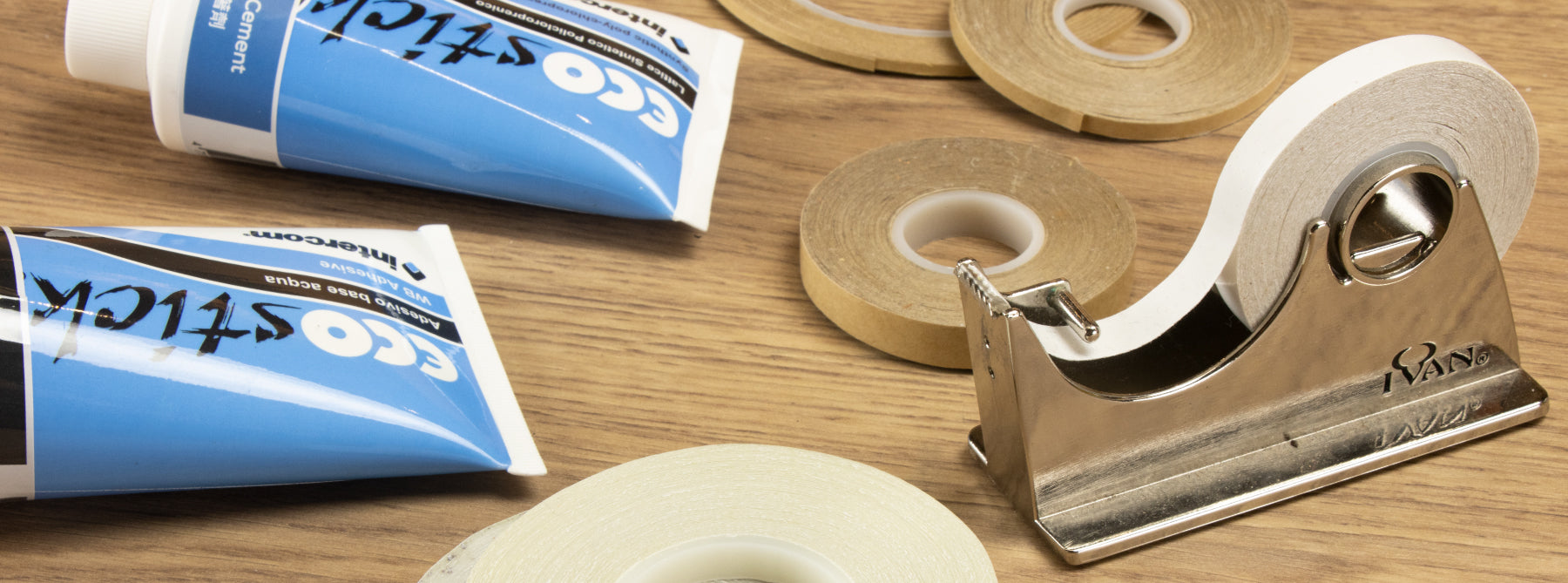
Tech Tip: The Ultimate Glue Guide
There are lots of reasons why you might want to join pieces of leather together using leather adhesive. You can glue leather for a permanent bond in place of sewing or temporarily tack pieces together while fastening hardware or sewing. They are effective, work quickly, and can be key to a successful project. Because leather is such a delicate material to work with, making sure you use the best adhesive (and applicators) for the job is important to achieve the best results.



Liquid cement and leather tape are the two ways you can adhere leather together. Depends on why you are gluing the pieces together, leather adhesive tape is a very convenient, doesn't require any applicators and mess-free option. You don't need to wait for the glue to try and can quickly move on to sewing or other assembling process.

Leather cement or adhesive are either solvent based or water based. Both works the same, the glued leather feels and reacts as one piece. However solvent based glue thicken overtime but can be thinned out with adhesive thinner. Because solvent is flammable, it is difficult to transport and require proper container to store this type of glue. Water based glues are easier to spread using spreaders. It is also easy to clean and do not have potent smell that you normally find in solvent based glue. An excellent option when you are working with children.

There are many applicators that can be used to apply leather adhesive. In general, you'd use a larger applicator to glue a large area and use smaller or fine tip applicator to get to tight corners or edges.

1. Stainless Steel Spreaders:
Works with both solvent and water based adhesive. The high polish stainless steel makes for an easy clean up (even if the adhesive has dried to the surface). Easy to spread thin layer of glue across leather surface.
This quick video shows you how to apply our Ecostick® Water Based Adhesive. It is a very easy process that only takes a few minutes to get the perfect result. If you are a neat freak (like us), work onto of a glue mat will ensure you keep the sticky mess under control.
2. Silicone Spreaders:
Spreaders that have silicone tips are pliable enough to get into corners and conform to the shape of your project so you can get into tight corners easier. The non-stick surface also makes it easy to clean. However, silicone works only with water based adhesive and not recommended for solvent based glue.

3. Brushes:
If you prefer to use brushes to apply glue, select glue brushes that are firm but still flexible. The bristles of brushes are often ruined when glue is left to dry. It is imperative that you clean your brushes after each use if you want to keep them in good working order.



4. Plastic Spreaders:
This type of spreader has certain toughness and the brush head can withstand varying degrees of pressure. Besides working great on leather, they are suitable for applying glue on felt, synthetic leather, paper, cardboard, wood, etc. Once you finish applying glue, simply rinse the brush head off with warm soap and water and you can reuse them.

5. Dual Head Glue Brush & Container Set:
If you work with both brush and spreader, this dual head applicator and storage combo is the way to go! The mini brush bristles retain more glue in one spread, so you can lay down more glue each time. The paddle head gives you precise control when gluing zipper, edge seam or small area. The funneled container keeps glue readily accessible, as well as a place to rest your brush when you are busy working on other parts of your project.


See Cement & Prep for the range of adhesives we offer and visit Applicator & Accessories to learn more about the applicators for your glue needs.
